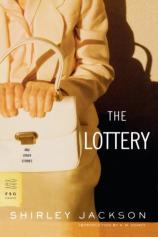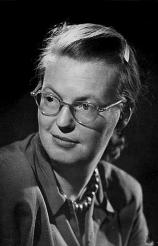Reading Group Guide
Discussion Questions
The Lottery and Other Stories

Introduction
One of the most terrifying stories of the twentieth century, Shirley Jackson’s “The Lottery” created a sensation when it was first published in 1948. Today it is considered a classic work of short fiction, a story remarkable for its combination of subtle suspense and pitch-perfect descriptions of both the chilling and the mundane. THE LOTTERY AND OTHER STORIES also includes 24 other stories encompassing the hilarious and the horrible, the unsettling and the ominous.
We hope that the following discussion topics will enrich your reading group’s experience.
Questions and Topics for Discussion
1. The ordinary nature of Shirley Jackson’s settings and characters contributes to the horror of events in many of her stories. What other techniques of language, pacing and description does she use to create a buildup of suspense?
2. James or Jamie Harris, the “daemon lover,” appears early in the collection and makes multiple reappearances. Do we know any more about him at the end of the book than we did at the beginning? In the story “The Daemon Lover,” is he real or the creation of a troubled mind? What is revealed in the epilogue?
3. How does Jackson feel about people who look down on others or who care too much about outward appearances? Which stories deal with this explicitly?
4. Although she wrote during the pre-feminist era, some critics have described Jackson as a feminist. Based on these stories, do you agree? What is her view of women’s place in the world, and the challenges and pitfalls of the roles women are expected to play? What are the particular perils of being a wife or mother?
5. David and Marcia, the main characters in “Like Mother Used to Make,” are almost opposites in how they choose to live. Look at the verbs and adjectives that describe each of them. How do these add up to tell us more than Jackson includes in the story?
6. How does Jackson use weather and time of day to establish mood?
7. What happens to Clara in “The Tooth” and Margaret in “Pillar of Salt”? What is hallucination and what is real? How does Jackson gradually turn their circumstances from normal into terrifying? Why do you think she chooses the city as the setting?
8. What is the common thread among the stories in Part I? How are the characters similar? How does each of them deal with finding themselves in disorienting circumstances?
9. The stories in Part II focus on children. According to Jackson, how is a child’s view of the world different from that of an adult? What is it children have to teach their parents?
10. How does Jackson use rooms and their furnishings to develop her characters? What is significant about a character gaining or losing a possession?
11. How does Jackson portray family relationships? Between husbands and wives? Parents and children?
12. In “The Lottery,” we learn much about the rules and procedures for the lottery, but nothing about how it began or what it is meant to accomplish. What might it symbolize? What is it meant to condemn?
13. “The Lottery” shows how things can be very wrong beneath the surface of what seem to be mundane circumstances. What other stories in the collection have a similar theme? Jackson was born in 1916. THE LOTTERY AND OTHER STORIES was first published in 1948. How might she have been influenced by events of the era in which she came of age?
14. At the beginning of Parts II, III, and IV, Jackson quotes from SADDUCISMUS TRIUMPHATUS by Joseph Glanvil. What is this? Why do you think she chose to include it? How does each of the excerpts relate to the stories that follow?
15. What are your favorite stories in the collection? What are the elements of these that appeal to you?
The Lottery and Other Stories
- Publication Date: March 16, 2005
- Genres: Classics, Fiction, Gothic, Horror, Short Stories
- Paperback: 320 pages
- Publisher: Farrar, Straus and Giroux
- ISBN-10: 0374529531
- ISBN-13: 9780374529536








